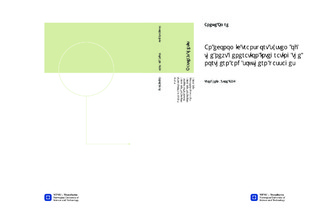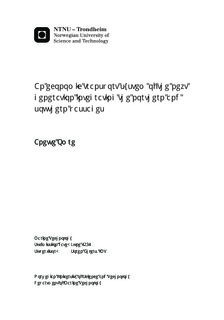| dc.contributor.advisor | Ehlers, Soren | nb_NO |
| dc.contributor.author | Omre, Anette | nb_NO |
| dc.date.accessioned | 2014-12-19T12:07:20Z | |
| dc.date.available | 2014-12-19T12:07:20Z | |
| dc.date.created | 2012-11-08 | nb_NO |
| dc.date.issued | 2012 | nb_NO |
| dc.identifier | 566061 | nb_NO |
| dc.identifier | ntnudaim:7727 | nb_NO |
| dc.identifier.uri | http://hdl.handle.net/11250/238157 | |
| dc.description.abstract | The ice cap surrounding the Arctic Ocean has been significantly reduced during the last decades. As the ice continues to diminish the economic potential of the NSR is becoming stronger. However there are still challenges and uncertainties connected to navigation in the Arctic. Among these are the lack of marine infrastructure, the uncertainties regarding the regulations and length of the ice free season. The purpose of this master thesis is therefore to develop a transport simulation model to investigate the economic feasibility of a NSR transport system. The route has not been evaluated as a year-round substitute for the traditional route through the Suez Canal, but has been integrated with the southern passage. As a result the Northern Sea Route is only used as an alternative in the navigation season between August and the end of November. In order to investigate the feasibility of the route a case study is developed. Container cargo is evaluated as the most suitable shipping cargo; therefore the case study presents a possible container transport between Rotterdam in the Netherlands and Yokohama in Japan. The shorter distance of the NSR is exploited in two ways, either by slow steaming or increasing the number of transits a year. In addition the transport systems are evaluated for 4 different ice classes, 7 different ice scenarios and a fleet consisting of 6 or 7 vessels. The transport simulation model calculates the speed and fuel consumption in ice with the use of an ice thickness-speed curve (h-v curve). The h-v curve is found by calculating the ice resistance of the vessel for variable ice thicknesses and the corresponding net thrust available to overcome this resistance. Further the model simulates the schedules and calculates the total fuel consumption for the entire fleet. The output of the model is the required freight rate (RFR) for the NSR transport systems and the Suez Canal route.The simulation results indicate that:- The optimal fleet size consist of 7 vessels- The slow steaming schedule is more profitable than the maximum transits schedule- The optimal ice class for the less severe ice scenarios are IC, while IB is better when the ice conditions harshen- All ice classes are more profitable than the SCR if the ice conditions are less severe than ice scenario 5 | nb_NO |
| dc.language | eng | nb_NO |
| dc.publisher | Institutt for marin teknikk | nb_NO |
| dc.subject | ntnudaim:7727 | no_NO |
| dc.subject | MTMART Marin teknikk | no_NO |
| dc.subject | Marin prosjektering og logistikk | no_NO |
| dc.title | An economic transport system of the next generation integrating the northern and southern passages | nb_NO |
| dc.type | Master thesis | nb_NO |
| dc.source.pagenumber | 87 | nb_NO |
| dc.contributor.department | Norges teknisk-naturvitenskapelige universitet, Fakultet for ingeniørvitenskap og teknologi, Institutt for marin teknikk | nb_NO |

